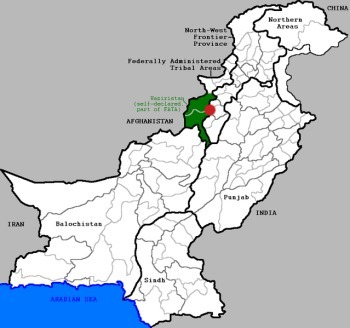The death toll in Friday’s Bannu volleyball bombing appears to have topped out at 101 killed and around 100 others wounded, virtually everyone that was present at the site of the attack, and much of the population of the tiny village.
 Locals, and even the district’s member of parliament are up in arms, however, as officials concede that the death toll would have been much lower if the district’s medical infrastructure had been more competent.
Locals, and even the district’s member of parliament are up in arms, however, as officials concede that the death toll would have been much lower if the district’s medical infrastructure had been more competent.
“There was nowhere in the whole district to treat the injured,” MP Mannawar Khan insisted. The closest hospital reportedly only had one doctor on duty at the time of the attack, had no functional X-ray machine and little medicine. Others complained that the lack of security made the attack possible in the first place.
Oftentimes after major civilian deaths in an attack, there is speculation that either the government of the militants will suffer from this backlash. The unfortunate reality of people living in villages in the FATA and NWFP however is that they have little power, political or otherwise, and if their objections to the endless conflict around their homes mattered at all, those conflicts would’ve ended a long time ago.





sounds like Pakistan should be investing into building Hospitals and not support the USA Dream of World control. tell the Yankeys to go home and start looking after their own Country. it's in shambles.
The US only funds death.